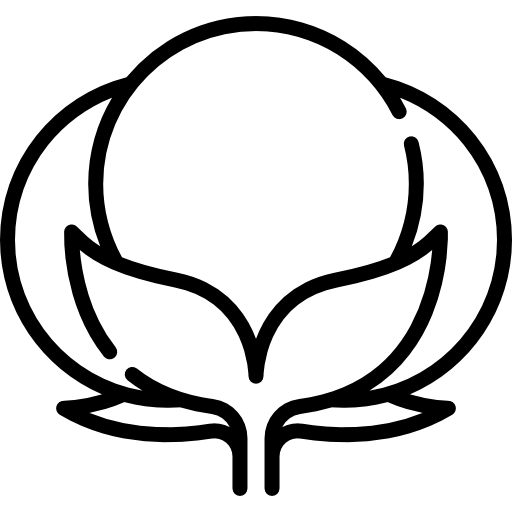Die Isolierung Ihres Bienenstocks ist entscheidend für die Wärme im Stock und den Schutz Ihrer Bienen, insbesondere im Winter. Eine effektive Isolierung gewährleistet die Gesundheit und Produktivität Ihres Stocks und hilft Ihren Bienen, rauen Bedingungen standzuhalten und das ganze Jahr über zu gedeihen. Dieser Artikel bietet wichtige Tipps zur Bienenstockisolierung und führt Sie mit Schritt-für-Schritt-Anleitungen und praktischen Ratschlägen durch den Prozess.
Die Bedeutung der Bienenstockisolierung
Bienenstock Isolierung spielt eine entscheidende Rolle bei der Wärme im Bienenstock, die für die Gesundheit Ihrer Bienen unerlässlich ist. In der Winterimkerei hilft Isolierung, die Temperatur im Bienenstock zu regulieren, verhindert so eine Unterkühlung des Bienenvolkes und reduziert den Energieaufwand der Bienen, um sich warm zu halten. Eine gute Isolierung schützt den Bienenstock zudem vor extremen Temperaturschwankungen und sorgt für ein stabiles Umfeld für Ihre Bienen.

Auswahl der richtigen Dämmstoffe
Die Auswahl der geeigneten Dämmstoffe ist der erste Schritt zu einer effektiven Bienenstockdämmung. Hier sind einige häufig verwendete Optionen:
- Styropor: Styropor ist leicht und einfach zu verarbeiten und bietet eine hervorragende Isolierung.
- Reflektierende Luftpolsterfolie: Dieses Material kombiniert Isolierung mit einer reflektierenden Oberfläche, um den Wärmeverlust zu reduzieren.
- Fiberglas: Wirksam, erfordert aber eine sorgfältige Handhabung, um Reizungen zu vermeiden.
- Natürliche Materialien: Stroh, Holzspäne und Sägemehl sind umweltfreundliche Optionen, die eine gute Isolierung bieten.
Jedes Material hat seine Vor- und Nachteile. Wählen Sie daher das Material aus, das Ihren Anforderungen und Klimabedingungen am besten entspricht.
Schritt-für-Schritt-Anleitung zur Isolierung Ihres Bienenstocks
Befolgen Sie diese Schritte, um Ihren Bienenstock effektiv zu isolieren:
1. Bereiten Sie Ihren Bienenstock vor
- Untersuchen Sie den Bienenstock: Bevor Sie eine Isolierung anbringen, überprüfen Sie Ihren Bienenstock auf Schäden oder Lücken. Reparieren Sie alle Mängel, um die Stabilität des Bienenstocks zu gewährleisten.
- Reinigen Sie den Bienenstock: Entfernen Sie Schmutz und stellen Sie sicher, dass der Bienenstock sauber ist. Dieser Schritt ist entscheidend, um Schädlinge und Krankheiten vorzubeugen.
2. Isolierung anbringen
- Wickeln Sie den Bienenstock ein: Beginnen Sie damit, den Bienenstock mit dem von Ihnen gewählten Isoliermaterial zu umwickeln. Stellen Sie sicher, dass das Material alle Seiten des Bienenstocks bedeckt und keine Lücken entstehen.
- Sichern Sie die Isolierung: Befestigen Sie das Isoliermaterial mit Klebeband oder Gurten fest um den Bienenstock. Stellen Sie sicher, dass es auch bei Wind an Ort und Stelle bleibt.
- Fügen Sie eine obere Abdeckung hinzu: Legen Sie eine isolierte Abdeckung oder ein Brett auf den Bienenstock, um Wärmeverlust von oben zu verhindern.
3. Belüftung
- Sorgen Sie für ausreichende BelüftungBeim Isolieren ist auf ausreichende Belüftung zu achten. Schlechte Belüftung kann zu Feuchtigkeitsansammlungen führen, die für die Bienen schädlich sein können. Lassen Sie oben im Bienenstock einen kleinen Spalt zur Belüftung.
4. Überwachen Sie den Bienenstock
- Regelmäßige Inspektionen: Kontrollieren Sie Ihren Bienenstock im Winter regelmäßig, um sicherzustellen, dass die Isolierung intakt und der Bienenstock gut belüftet ist. Nehmen Sie alle notwendigen Anpassungen vor, um optimale Bedingungen zu gewährleisten.
Saisonale Bienenstockpflege für optimale Isolierung
Passen Sie die Isolierung Ihres Bienenstocks den Jahreszeiten an, um ganzjährigen Schutz zu gewährleisten:
| Jahreszeit | Aktion | Details |
| Winter | Wickeln Sie den Bienenstock ein | Verwenden Sie Materialien wie Teerpappe, Schaumstoffplatten oder spezielle Bienenstockfolien, um die Wärme zu speichern. |
|
| Fügen Sie eine innere Abdeckung hinzu | Installieren Sie eine isolierte Innenabdeckung, um zusätzliche Wärme zu spenden und kalte Zugluft zu verhindern. |
|
| Installieren Sie einen Windschutz | Errichten Sie einen Windschutz (z. B. Zaun, Büsche), um den Bienenstock vor starkem Wind zu schützen. |
|
| Überwachung der Lebensmittelversorgung | Sorgen Sie für ausreichend Honigvorrat oder füttern Sie zusätzlich mit Zuckersirup oder Fondant. |
| Sommer | Überschüssige Isolierung entfernen | Reduzieren oder entfernen Sie die Winterumhüllung, um eine bessere Luftzirkulation zu ermöglichen und eine Überhitzung zu vermeiden. |
|
| Verbesserte Belüftung | Sorgen Sie für eine gute Belüftung, indem Sie abgeschirmte Bodenbretter verwenden oder die Außenabdeckung aufstützen. |
|
| Schatten spenden | Stellen Sie den Bienenstock in den Halbschatten oder schaffen Sie mit einer Abdeckung Schatten, um den Bienenstock kühler zu halten. |
|
| Sicherstellung der Wasserverfügbarkeit | Stellen Sie eine nahegelegene Wasserquelle bereit (z. B. eine flache Schale mit Kieselsteinen), damit die Bienen den Bienenstock kühlen können. |
| Regulär | Saisonale Inspektionen | Untersuchen Sie den Bienenstock zu Beginn jeder Saison, um den Zustand zu beurteilen und Anpassungen vorzunehmen. |
|
| Überwachen Sie die Gesundheit Ihres Bienenstocks | Achten Sie auf Anzeichen von Krankheiten und Schädlingen und stellen Sie sicher, dass die Bienen insgesamt gesund sind. |
|
| Anpassung an das lokale Klima | Passen Sie die Pflegemaßnahmen für den Bienenstock an die örtlichen Klimabedingungen an (z. B. strengere Winter). |
|
| Verwendung von Dämmplatten | Verwenden Sie Isolierplatten an der Oberseite und an den Seiten des Bienenstocks und fügen Sie sie nach Bedarf hinzu oder entfernen Sie sie. |
Diese Tabelle bietet einen klaren Überblick über die notwendigen Schritte zur saisonalen Bienenstockpflege, um eine optimale Isolierung und Bienenstockgesundheit sicherzustellen.
Vorteile der Bienenstockisolierung
Die Isolierung Ihres Bienenstocks bietet mehrere Vorteile:
- Verbesserte Bienenstockgesundheit: Isolierung trägt zur Aufrechterhaltung einer stabilen Umgebung bei, reduziert den Stress für die Bienen und fördert die allgemeine Gesundheit des Bienenstocks.
- Erhöhte Honigproduktion: Ein gut isolierter Bienenstock ermöglicht es den Bienen, sich mehr auf die Nahrungssuche und die Honigproduktion zu konzentrieren, anstatt Energie aufzuwenden, um sich warm zu halten.
- Verbessertes Überleben der Kolonie: Eine ordnungsgemäße Isolierung erhöht die Überlebenschancen der Kolonie bei rauen Wetterbedingungen und sorgt für einen starken und gesunden Bienenstock.
Praktische Imkertipps zur Isolierung
Hier sind weitere Tipps zur Bienenhaltung, um Ihre Isolierungsbemühungen zu verbessern:
- Verwenden Sie einen Bienenstockständer: Erhöhen Sie Ihren Bienenstock mit einem Ständer, um zu verhindern, dass Kälte vom Boden eindringt.
- Windschutz: Platzieren Sie Windschutze um Ihren Bienenstock, um ihn vor starkem Wind zu schützen und den Wärmeverlust zu reduzieren.
- Lebensmittelvorräte überwachen: Sorgen Sie dafür, dass Ihre Bienen genügend Nahrung für den Winter gelagert haben, da sie auf diese Reserven angewiesen sind, wenn eine externe Nahrungssuche nicht möglich ist.
Vermeiden Sie häufige Fehler wie Überisolierung, die zu schlechter Belüftung und Feuchtigkeitsbildung führen kann.

Rüsten Sie sich mit Imkeranzügen von OZ Armour aus
Neben der Erhaltung eines gesunden Bienenstocks ist es wichtig, Ihre Sicherheit und Ihren Komfort zu gewährleisten. OZ Armour bietet eine Premium-Kollektion von Imkeranzüge Entwickelt, um maximalen Schutz vor Stichen zu bieten und Ihnen gleichzeitig Komfort bei der Inspektion und Wartung Ihres Bienenstocks zu bieten. Unsere Imkeranzüge werden aus hochwertigen Materialien gefertigt und gewährleisten Langlebigkeit und Atmungsaktivität, die bei der Arbeit mit Ihren Bienen, insbesondere während des Isolierungsprozesses, entscheidend sind.
Die Investition in einen zuverlässigen Imkeranzug von OZ Armour schützt Sie nicht nur, sondern ermöglicht Ihnen auch, selbstbewusst und effizient zu arbeiten und so das Wohlergehen Ihres Bienenstocks zu gewährleisten.
Abschluss
Die Isolierung Ihres Bienenstocks ist entscheidend für die Wärme im Stock und die Gesundheit und Produktivität Ihrer Bienen das ganze Jahr über. Durch die Wahl der richtigen Dämmmaterialien, einen schrittweisen Dämmprozess und die Anpassung an saisonale Veränderungen schaffen Sie eine stabile und gedeihende Umgebung für Ihre Bienen. Eine effektive Isolierung fördert die Gesundheit des Stocks, steigert die Honigproduktion und verbessert das Überleben des Volkes bei rauen Wetterbedingungen.
Darüber hinaus investieren Sie in hochwertige Imkeranzüge von OZ-Rüstung sorgt für Ihre Sicherheit und Ihren Komfort bei der Bienenhaltung. Setzen Sie diese Tipps und Praktiken um, um Ihre Bienen zu unterstützen und erfolgreiche Bienenhaltung zu genießen.












